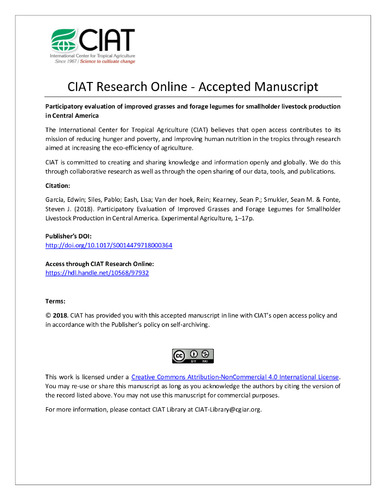Participatory evaluation of improved grasses and forage legumes for smallholder livestock production in Central America
Abstract
Smallholder livestock systems in Central America are typically based on pastures with traditional grasses and associated management practices, such as pasture burning and extensive grazing. With the rise of the global population and a corresponding increase in demand for meat and milk production, research efforts have focused on the development of improved grasses and the incorporation of legume species that can increase productivity and sustainability of Central American livestock systems. However, farmer adoption remains very limited, in part due to the lack of site-specific evaluation and recommendations by local institutions. Using a multi-site participatory approach, this study examined the potential of five improved grasses and five species of forage legumes as alternatives to the broadly disseminated grass Hyparrhenia rufa (cv. Jaragua) in pasture-based cattle systems in western Honduras and northern El Salvador. Improved grasses (four Brachiaria sp. and Megathyrsus maximus) produced significantly more biomass than H. rufa; also four of the five legume varieties evaluated (Canavalia ensiformis, Canavalia brasiliensis, Vigna unguiculata, and Vigna radiata) demonstrated high adaptability to diverse environmental conditions across sites. Farmer participatory evaluation offers a valuable means to assess performance of forages and will likely contribute to their improved utilization. Future research is needed on more refined management recommendations, pasture system design, costs and environmental benefits associated with the adoption of these forages in local livestock production systems.

